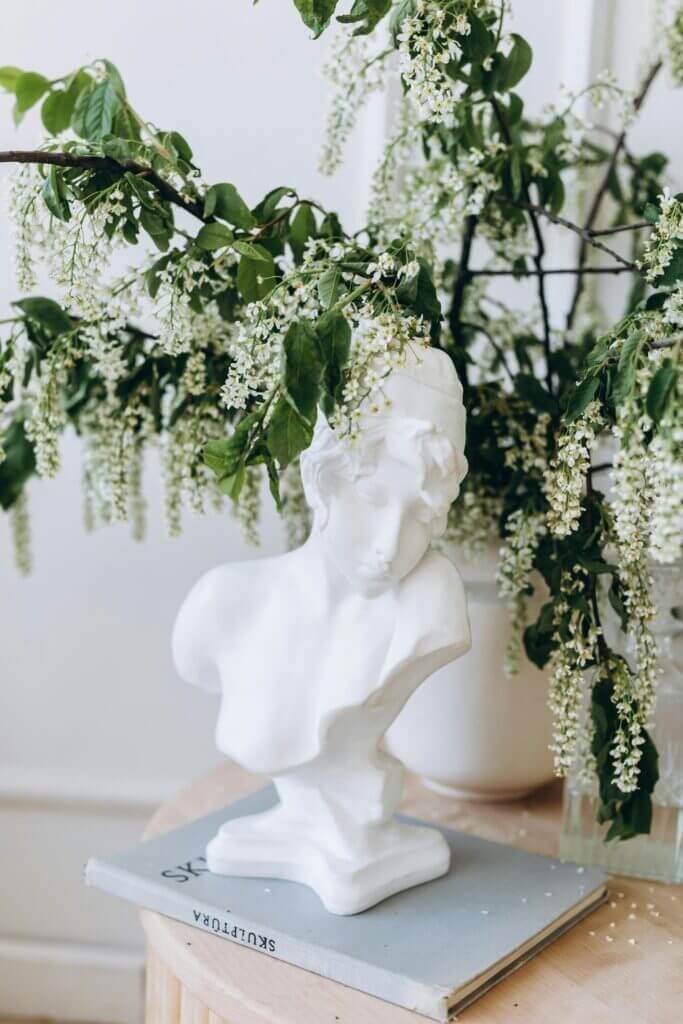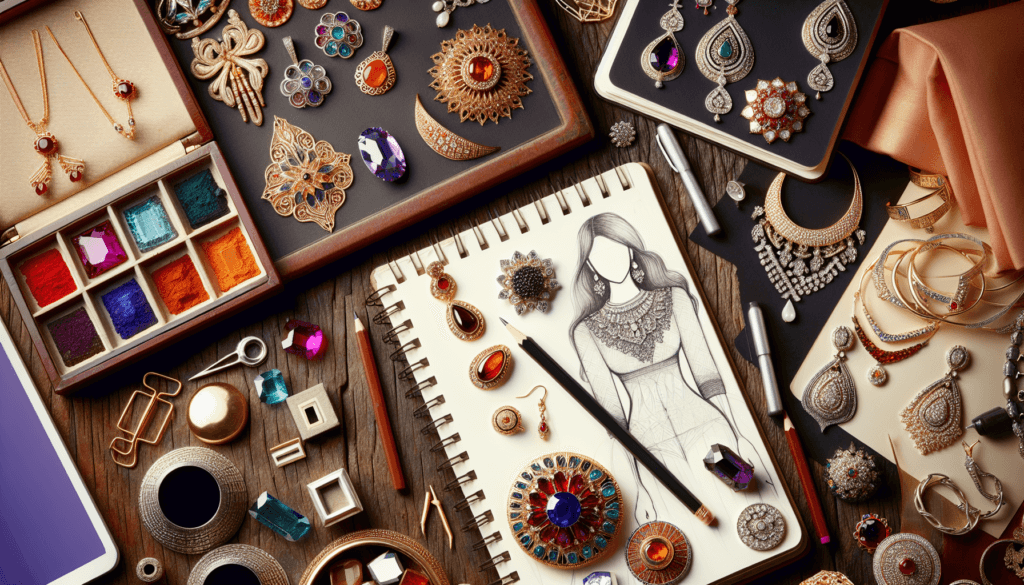Ever pondered about the sparkle and splendor infusing the pieces that you lovingly adorn or reserve for that special occasion? The awe-inspiring craftsmanship and unique designs don’t occur by magic; there’s an artist behind these wonders. This piece is about exploring the precise name of the artisan who puts together your precious pieces of jewellery. Brace yourself as you embark on decoding the artistry that constitutes your favorite accessories.

Understanding Jewellery Design
Jewellery design is a beautiful marriage of artistry and craftsmanship. As you may have guessed, it refers to the process of conceiving, crafting, and eventually realizing accessories that are often used for personal adornment. These can be anything from necklaces, rings, bracelets, earrings to even intricate body jewellery.
Defining jewellery design
At its core, jewellery design is an art form. It goes beyond simply putting together attractive pieces of metals and gems. Rather, it involves the process of translating an idea or inspiration into a wearable piece of art. It requires a keen eye for detail, a deep understanding of the materials being used, a strong sense of aesthetics, and an ability to work with small and sometimes delicate objects.
The Role of Crafting and Creativity in Jewellery Design
In jewellery design, crafting and creativity go hand in hand. You can’t have one without the other. The crafting part involves the physical process of transforming raw materials into a piece of jewellery. This might involve methods like molding, casting, welding, or engraving. On the other hand, creativity comes into play when you’re conceptualizing the design, selecting materials, or determining the functions and aesthetic value of the piece.
Who is a Jewellery Designer?
A jewellery designer is a professional who specializes in creating unique and original pieces of jewellery. They could be making anything from everyday wear to special pieces that are worn on special occasions.
Detailed description of a jewellery designer
Jewelry designers often start their creative process by sketching out their ideas on paper. Once they have a design they like, they’ll move on to creating a prototype. This might be done using a variety of methods, depending on the designer’s particular style and the materials they’re working with. Once the prototype is complete, the designer will make any necessary adjustments before creating the final product.
The essential skills of a jewellery designer
A good jewellery designer needs to have an eye for detail, a good sense of style and trends, and a good understanding of the different materials and techniques used in the industry. They also need to be good communicators, as they’ll often be working with clients, suppliers, and other professionals in the industry.

Role and Responsibilities of a Jewellery Designer
Understanding the job description
Being a jewellery designer involves more than just coming up with beautiful designs. They’re also responsible for sourcing the materials they need, creating prototypes of their designs, and working with other professionals like gem cutters and metalworkers to create their final products.
Engaging with clients
Jewellery designers often work closely with clients to create custom pieces. This involves meeting with the client to understand their vision, coming up with a design that meets their needs and expectations, and then working to bring that design to life.
Maintaining and sourcing materials
Another key aspect of a jewellery designer’s job is sourcing and maintaining their materials. This might involve negotiating with suppliers, ensuring that they have enough stock to meet demand, and caring for and storing their materials properly to ensure they stay in good condition.
Educational Background and Training for Jewellery Designers
Academic requirements
While it’s possible to become a successful jewellery designer without a formal education, many professionals in the field do have a degree in a related field, such as fashion design, art, or gemology.
Important courses and training programs
There are also many specialized courses and training programs available that focus specifically on jewellery design. These can be a great way to gain the practical skills and knowledge you’ll need to succeed in the industry.

Different Terminologies Used to Describe a Jewellery Designer
Interchangeable terms
The term ‘jewellery designer’ can sometimes be used interchangeably with ‘jeweller’. However, while a jeweller might be involved in the actual crafting and sale of a piece of jewellery, a jewellery designer is more focused on the conceptual and design aspects of the job.
Regional and cultural differences in terminology
Different cultures and regions might have their own terms for a jewellery designer. For instance, in the British industry, they’re often referred to as ‘goldsmiths’, while in Indian culture, the term ‘kaarigar’ is used to describe a craftsperson who makes jewellery.
Career Scope and Opportunities for Jewellery Designers
Job opportunities in different industries
There are many different industries where a jewellery designer might find work. These could include fashion, retail, film and theatre, or even working for a private clientele creating bespoke pieces.
Freelance versus regular employment
Many jewellery designers choose to work as freelancers, setting up their own business and selling their designs directly to the public. However, there are also opportunities for regular employment within larger design houses or retail companies.

Famous Jewellery Designers and Their Impact
Profiles of renowned designers
Throughout history, there have been many famous jewellery designers who have made significant contributions to the field. They include names like Fabergé, Cartier, and Tiffany & Co., whose revolutionary designs and innovative techniques have helped shape the industry as we know it today.
How they have influenced the industry
The legacy of these iconic designers lives on in the work of today’s designers, who continue to draw inspiration from their pioneering work. Their designs have set trends, defined eras, and continue to influence the styles and tastes of consumers around the world.
The Process of Jewellery Designing
Initial consultation to final creation
The process of designing a piece of jewellery often begins with a consultation, where the designer discusses the client’s ideas and expectations. From there, the designer will sketch out a design, create a prototype, make any necessary changes, and then produce the final piece.
Use of technology in design
In recent years, technology has become an increasingly important part of the jewellery design process. Tools like CAD (Computer-Aided Design) allow designers to create detailed 3D models of their designs, which can then be used to create precise and intricate pieces.

Understanding Jewellery Trends and Styles
Historical and cultural factors in design
Understanding jewellery trends and styles often require a knowledge of history and culture, as many designs draw their inspiration from various times and places. From the opulence of the Victorian era to the sleek minimalism of the modern age, the past continues to influence the designs of today.
Present and future trends
Staying ahead in the jewellery industry means keeping up with the latest trends. Whether it’s sustainable materials, gender-neutral designs, or tech-integrated pieces, it’s always important to be aware of where the industry is headed.
The Business Aspect of Jewellery Design
Understanding the market
An important part of being a successful jewellery designer is understanding the market. This means knowing what styles and designs are currently popular, what the competition is doing, and what potential customers are looking for.
Entrepreneurship in jewellery design
Finally, many jewellery designers choose to go into business for themselves. This requires not only the skills to design and create beautiful pieces of jewellery but also the ability to market those pieces, manage a business, and satisfy customers. This is where the business aspect of jewellery design comes into play, adding another dimension to this exciting and creative field.



